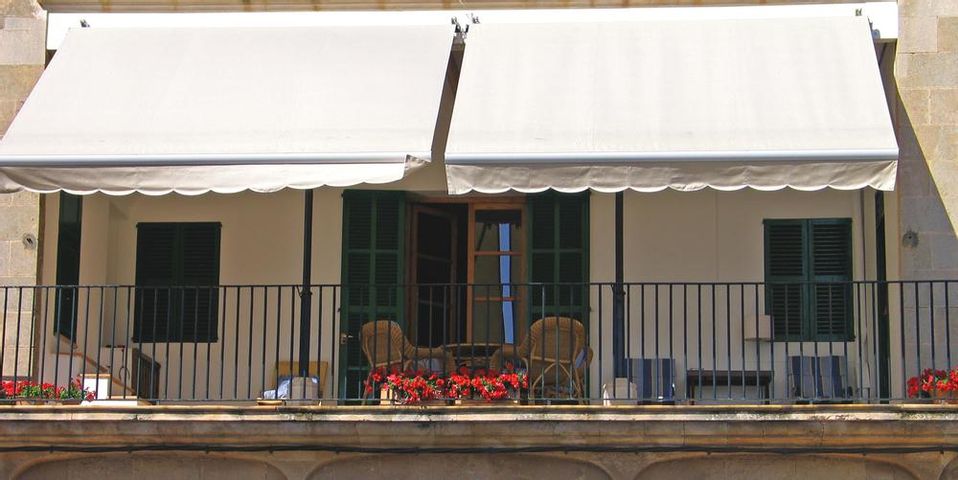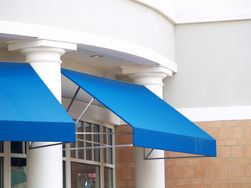Vinyl or Acrylic: Which Type of Fabric Awning Is Best for Your Home or Business?

When you want to reduce the amount of direct solar heat entering the windows of your home or business, consider installing fabric awnings. They can help cut energy costs, and since they come in a plethora of style options, you can choose one that adds character to your building. Two popular material options are acrylic and canvas. If you are unsure which might better serve your needs, check out the guide below.
Vinyl Awnings
Vinyl is light, durable, and fire retardant. Additionally, since it is more transparent than other options, vinyl looks attractive if the awning is illuminated. However, as the material is not very flexible, it could develop tears if you plan on using it in a windy area. Vinyl’s waterproof quality allows it to hold up well in very humid regions, but it is not very breathable. This might make it a poor choice if you plan on having people sit under the awning during warmer months of the year without an alternative air source.
Acrylic Awnings
 For a long time, the traditional fabric awning was made using a cotton-blend canvas. Today, acrylic has become a more durable form of this material. It is ideal for buildings located in humid areas as it repels water and resists mildew. Acrylic is also very breathable, which helps it dry quickly after getting wet; however, it will have to be treated regularly to maintain this feature as it is water repellent, not waterproof. It is more opaque and heavier than vinyl, so you might have to contend with it shrinking in the winter and stretching in the summer.
For a long time, the traditional fabric awning was made using a cotton-blend canvas. Today, acrylic has become a more durable form of this material. It is ideal for buildings located in humid areas as it repels water and resists mildew. Acrylic is also very breathable, which helps it dry quickly after getting wet; however, it will have to be treated regularly to maintain this feature as it is water repellent, not waterproof. It is more opaque and heavier than vinyl, so you might have to contend with it shrinking in the winter and stretching in the summer.
No matter which type of fabric awning you choose, you can find it at B&W Awning in Lexington, KY. They provide the highest quality of materials and framework systems for commercial and residential properties. Call them today at (859) 254-0973 with any questions you might have about their outdoor awning selection. You can also visit their website to see examples of past awnings they have installed.
About the Business
Have a question? Ask the experts!
Send your question

